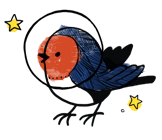In training aikido nearly everyday for over two years I just thought I'd like to summarise some things I noticed. It's pretty typical stuff for novices but if you carry these things on to black belt you run the risk of looking silly at best, to making your partner think you're trying to start a fight at worst. Of course I know also that I'm not perfect, and I by no means am pointing down at anyone from a high horse. Things like pulling can be subtle and hard to notice by yourself, and we've all caught ourselves not quite in hanmi when we should have been at some stage. So yeah, let's just remind ourselves, shall we?
Basics of Holding
Just hold the arm normally. Some people have this weird tendency of holding exactly on the wrist joint and then squeezing. I don't know what you think you're doing but please stop. In extreme cases the holder seems to loose sight of the bigger picture entirely and focus solely on statically clinging to your arm like a limpet.
Related to this is when people literally hang off you/lean on you. No. If you do that, you're giving up your balance entirely. It's too early for that. I mean if you're ready to fall over by yourself nage doesn't actually need to throw you, just get out of your way as you topple like lumber. The importance of learning good ukemi from early on is really evident here.
Distance: Again, even as uke, you should have some sense of self-preservation. Standing too close to nage, all bunched up really doesn't do much for you in that regard. It's hard to connect from the centre that way and hard to react. Remember the objective isn't to latch on to the person for dear life. You're meant to be the attacker. Don't put yourself in a vulnerable position.
Pulling and pushing: Happens as tori and uke. Rather than go for the opponent's centre, again become obsessed with the arm and try to move that. Really unpleasant. Pushing is the same. Sometimes the pull you on top of them. Do you want me to fall on you? Okay. I don't see how that's a win for you though. This is a really tricky one though. Most people who push and pull right up to advanced level aren't actually aware of it. Sometimes it's really obvious, sometimes only one side can feel it. Seemingly I pull when taking ukemi from shihonage sometimes and only on one side. Still working on that. Pushing only on the arm and not taking the centre is also really common on ikkyo etc. Something to watch out for.
Ukemi
Ah yes. The classic face ukemi. I dunno. Do you want your face rearranged like a Picasso painting? Rather than come forward from the centre, sometimes you have people willing to sacrifice their face. Totally unnecessary if you bring your whole body forward and you're more stable and a better position to react.
Not in hanmi: Common especially if the uke follows around from an irimi-tenkan, the arrive to stand squarely in front. Totally exposed. Well within kicking distance. Think about it. Again, even as uke please have some sense of self-preservation.
Take ukemi before nage has even done anything. This especially drives me crazy in crowded dojo: when you're taking care to not hit people on either side of you and suddenly your uke just randomly repels themselves away from you in dramatic roll/backfall. If you want to do that please go do it in a field by yourself. Otherwise, please at least try to stay connected. It's not always that easy I know, but please try. Of course if nage is pulling or going ahead it can be really difficult. That's why it's interesting though: with the two sides giving their best and being sensitive to the other side you can make really interesting discoveries. First though it's important to be able to protect yourself with good ukemi and it's also great if you can build you a trust relationship to give each other feedback. Then everyone improves.
That's about it for now. People who don't do aikido will have been entirely lost but thanks for following along anyway.
All images are property of Robin Hoshino and not to be used with out permission



























